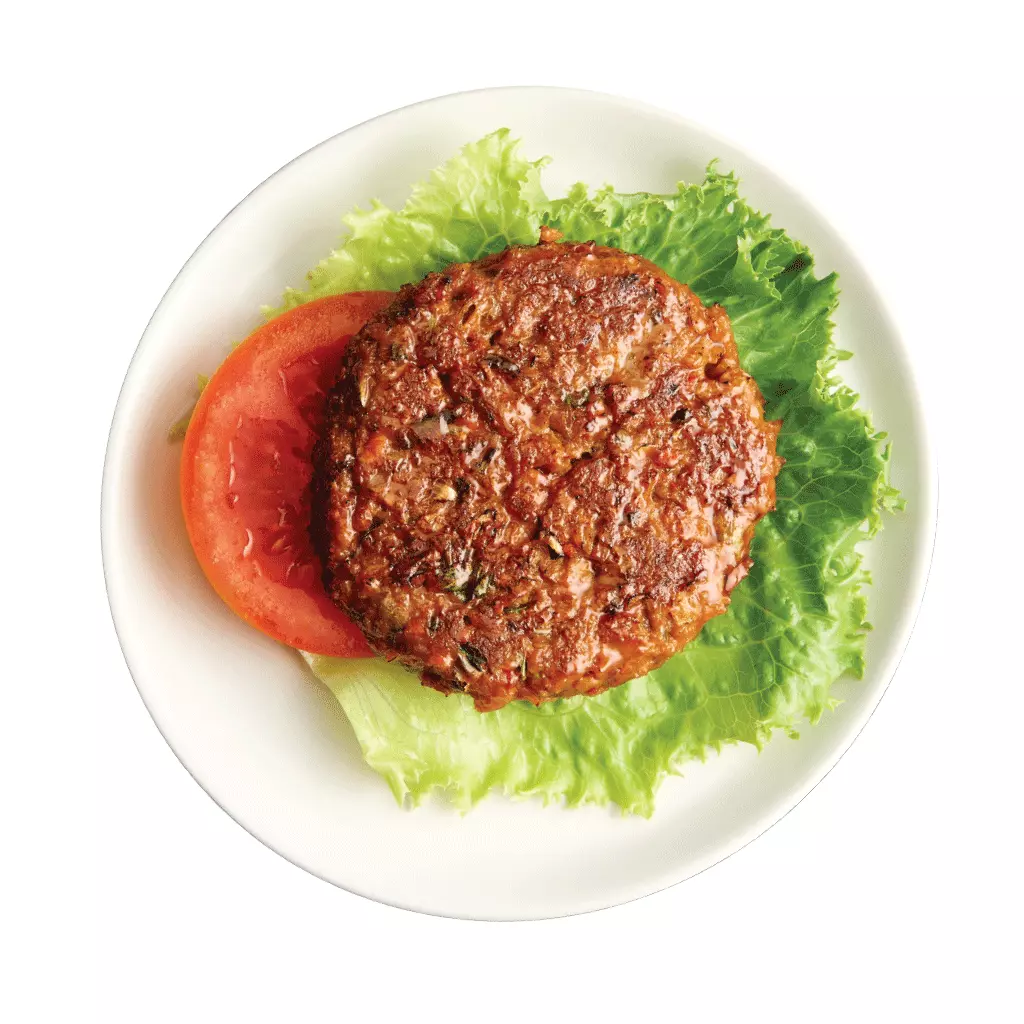Embarking upon a weight loss journey is a multifaceted endeavor, one that is often marked by a blend of exhilaration, hope, and a quest for lasting change. The introduction of GLP-1 (Glucagon-like Peptide-1) agonists has rendered a newfound hope to individuals on this journey, providing pharmaceutical assistance in managing obesity and related metabolic disorders. However, it is common that as one reaches their goals, anxiety concerning potential weight regain often arises. This transition phase, from relying on medication to steering one’s progress through dietary choices, requires a meticulous approach to sustain the hard-earned achievements.
The fear of losing grip over the newly acquired health and weight status post-therapy is valid and shared by many. It evokes an imperative question: How does one ensure the scales don’t tip backward once the GLP-1 therapy concludes? The answer lies in embracing a nutrient that has stood the test of time — Protein. This macronutrient emerges as a cornerstone in the narrative of weight management, especially during the post-therapy phase.
This comprehensive guide is crafted to assuage the concerns associated with post GLP-1 therapy, highlighting the important role of protein in anchoring the achieved weight loss. We will explore how protein, with its satiety-enhancing and muscle-preserving properties, can be your steadfast ally in maintaining and furthering your weight loss milestones. The objective is to provide you with knowledge and strategies to transition into a lifestyle that sustains the progress achieved with GLP-1 agonists and propels you on the path of holistic well-being.
The aim is to foster a sense of empowerment, enabling you to navigate through the post-therapy phase with informed dietary choices. The spotlight will be on elucidating practical, actionable strategies that can be seamlessly integrated into your daily regimen to avoid weight regain post therapy.
The intent is to provide a roadmap that alleviates fears, nurtures confidence, and fosters sustained weight management and enhanced metabolic health.
Transitioning from GLP-1 Therapy: A New Horizon
The culmination of GLP-1 agonist therapy should not be seen as an end, but rather as a new beginning. This phase involves the shift from pharmacological assistance to nutritional empowerment, where dietary choices become the factor for maintaining weight loss accomplishments.
Protein: The Nutritional Key for Sustained Weight Management
Protein, an indispensable macronutrient, is often revered for its vital role in numerous bodily functions. It transcends beyond merely being a part of our daily diet to becoming a formidable ally, especially in the nuanced journey of weight management post GLP-1 therapy. The multifaceted benefits of protein are quintessential for upholding hard-earned weight loss achievements. Let’s delve deeper into the impact of protein in sustaining weight management:
1. Satiety Enhancement
The realm of nutrition science resonates with the satiety-enhancing prowess of protein. When you consume protein-rich meals, there’s a notable reduction in the secretion of ghrelin, often termed as the ‘hunger hormone’. At the same time, there’s a propulsion in the secretion of hormones such as cholecystokinin and GLP-1 that act as precursors of fullness. This dual modulation creates a strong satiety response, leading to a natural moderation in caloric intake. Such a modulation is not just transient; it extends over subsequent meals, often leading to a lower caloric intake throughout the day.
In the broader spectrum of weight management post GLP-1 therapy, this attribute of protein is a linchpin in averting the feared weight regain by aiding in the moderation of caloric intake.
2. Muscle Mass Preservation
The path to weight loss can often lead to muscle loss, which may slow down metabolism. Here, protein steps in as a key player in maintaining muscle health. It aids in the repair, maintenance, and growth of muscle tissues by providing essential amino acids. Preserving muscle mass is crucial for weight management. More muscle helps maintain a higher metabolic rate, ensuring the body burns energy efficiently, even at rest. This is vital for long-term weight loss maintenance, especially after concluding GLP-1 therapy, as it helps keep the weight off.
The synergy between the satiety enhancement and muscle preservation attributes of protein creates a conducive milieu for sustained weight management. As individuals transition off GLP-1 therapy, embracing a protein-rich dietary paradigm can significantly ease the challenges associated with maintaining the achieved weight loss. Through its dual action, protein acts as a nutritional vanguard, safeguarding the progress made during the GLP-1 therapy phase and steering individuals towards continued success in their weight management journey.
Bridging Protein Intake with Weight Maintenance Post GLP-1 Therapy
The transition from GLP-1 therapy into a self-managed dietary approach for sustaining weight loss showcases the imperative need for a well-laid dietary strategy. At the forefront of this strategy lies protein. The synergy between a protein-rich diet and the continuum of weight loss or maintenance post GLP-1 therapy manifests in critical domains that are instrumental in averting weight regain. Let’s delve into the nuanced interplay of protein intake with weight maintenance post GLP-1 therapy:
1. Caloric Moderation
The journey towards sustained weight management post GLP-1 therapy often hinges on the ability to moderate caloric intake. Protein, with its satiety-centric nature, emerges as a natural ally in this quest. Protein serves as a deterrent to caloric indulgences by inducing a pronounced sense of fullness.
The mechanism underlying this satiety enhancement is intricate, encompassing hormonal modulation and gastric emptying retardation, collectively contributing to a prolonged feeling of fullness. This, in turn, can lead to a natural reduction in meal size and frequency of snacking, translating into a moderation in caloric intake.
This facet of protein is particularly beneficial in the post GLP-1 therapy phase, where the absence of the appetite-suppressing effect of the medication necessitates a dietary approach to manage hunger and caloric intake.
2. Metabolic Resilience
The saga of weight management is deeply intertwined with metabolic resilience, the ability of the body to sustain an efficient energy expenditure even in the face of caloric restriction or weight loss. Central to this resilience is preserving lean muscle mass. Protein provides the indispensable amino acids required for muscle protein synthesis, thereby playing a pivotal role in the preservation and even augmentation of muscle mass.
A robust muscle mass is synonymous with a higher resting metabolic rate, as muscle tissue is metabolically more active compared to fat tissue. This heightened metabolic activity creates a conducive environment for sustained weight management, ensuring that the body continues to expend energy efficiently. In the post GLP-1 therapy phase, this protein attribute is key in fostering a metabolic milieu conducive to weight maintenance.
The symbiotic relationship between protein intake and weight maintenance post GLP-1 therapy encapsulates a holistic approach that transcends beyond mere caloric control. It fosters a scenario where the body’s metabolic machinery is tuned towards sustaining the weight loss achieved, undergirded by a dietary strategy that satiates, nourishes, and preserves metabolic vigor. This nuanced approach underscores the importance of dietary empowerment in the journey towards sustained weight management post GLP-1 therapy, with protein standing as a formidable ally in this quest.
Adopting a Protein-Centric Dietary Approach: Practical Strategies
Transitioning to a protein-centric dietary requires a blend of informed decisions, strategic planning, and a dash of culinary exploration. This transition is pivotal in fostering sustained weight management. Below is an elucidated roadmap designed to navigate through this transition, ensuring a seamless integration of a protein-rich diet into your daily regimen:
1. Diversifying Protein Sources
A hallmark of a well-rounded diet is the diversity of nutrients, and the same principle holds true when it comes to protein. A balanced mix of animal and plant-based proteins ensures a comprehensive amino acid profile and caters to varied dietary preferences and ethical considerations.
This diversification is instrumental in fostering optimal muscle maintenance and overall nutritional adequacy, and introducing a variety that can make the dietary transition enjoyable. Examples of protein-rich foods span across a wide spectrum including meats, fish, eggs, dairy products, legumes, nuts, and seeds. Exploring different cuisines and recipes can unveil a plethora of protein-rich dishes, making the dietary transition both healthful and delightful.
2. Even Distribution of Protein
The strategy of equitably distributing protein intake across meals is grounded in science. It ensures a steady supply of amino acids, which is crucial for ongoing muscle protein synthesis, hormonal balance, and other physiological processes. This strategy also promotes prolonged satiety, thereby aiding in caloric control.
Moreover, an even protein distribution can keep energy levels stable throughout the day, averting the energy lows that might lead to unhealthy snacking. Designing meals with a good protein source at its core, complemented by a variety of other nutrients, can set the stage for a balanced dietary approach conducive for weight maintenance post GLP-1 therapy.
3. Smart Snacking
Smart snacking is about making choices that align with your health goals. Incorporating protein-rich snacks can act as a bulwark against untimely hunger pangs, and can be instrumental in aiding caloric control. Options like Greek yogurt, nuts, seeds, protein bars, or even a small portion of lean meat or cheese can be go-to choices. These protein-rich snacks curb hunger and provide essential nutrients that support overall health.
4. Professional Guidance
The path of dietary transition post GLP-1 therapy is nuanced and individualized. Engaging with a healthcare professional or a registered dietitian can provide invaluable tailored advice. They can help craft a protein-rich dietary approach that aligns with your post-therapy health goals, considering your personal preferences, lifestyle, and any other health conditions.
This professional guidance can ensure a seamless transition into this new phase of your weight management journey, providing a structured plan, addressing concerns, and making adjustments as needed to foster success in sustained weight management.
Conclusion
As the chapter of GLP-1 therapy concludes, a new narrative of self-empowerment through dietary mastery begins. Protein, with its satiety-inducing and muscle-preserving attributes, is a pivotal character in this narrative, aiding in the continuum of weight management post-therapy.
Adopting a protein-centric dietary approach, diversifying protein sources, and ensuring an even distribution of protein intake are pragmatic strategies that lay the foundation for sustained weight management. Coupled with professional guidance, these strategies can significantly allay the fears of weight regain, heralding a path of continued success in your weight management journey. The synergy between a protein-rich diet and sustained weight management post GLP-1 therapy is not merely a dietary adjustment but a lifestyle transformation to foster lasting health, well-being, and self-assurance.
If you are looking for expert insights to overcome your weight loss challenges or require proper guidance to maintain your weight loss results, we can help. Simply set up a free consultation with our coaches or give us a call at 858-228-3644.






